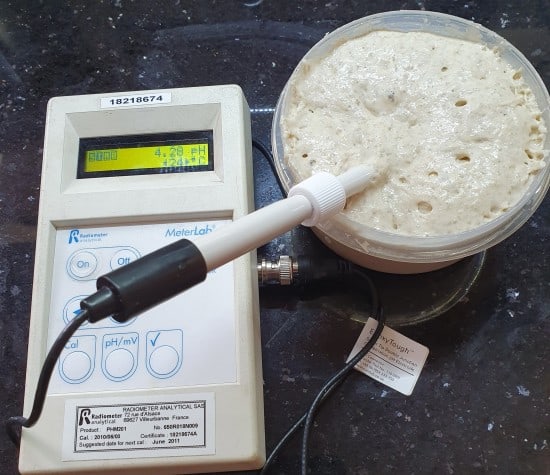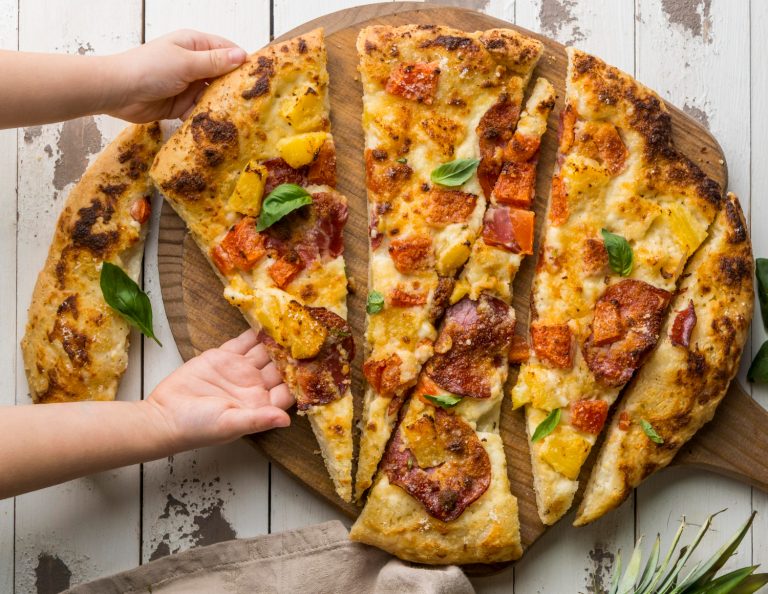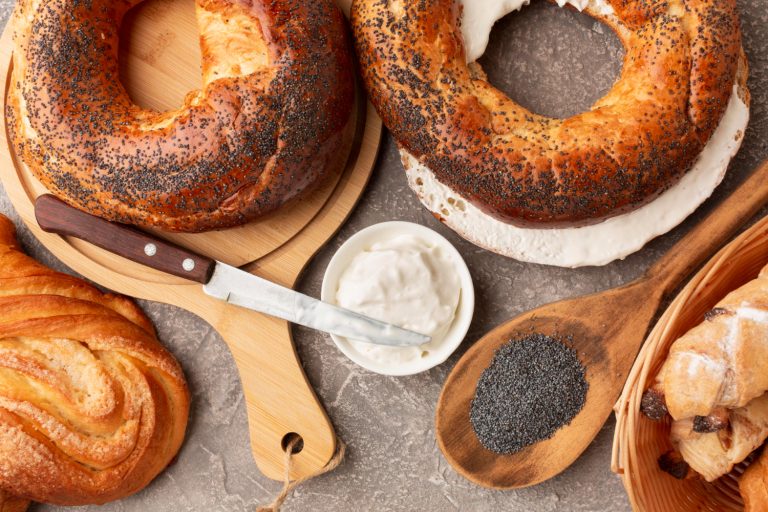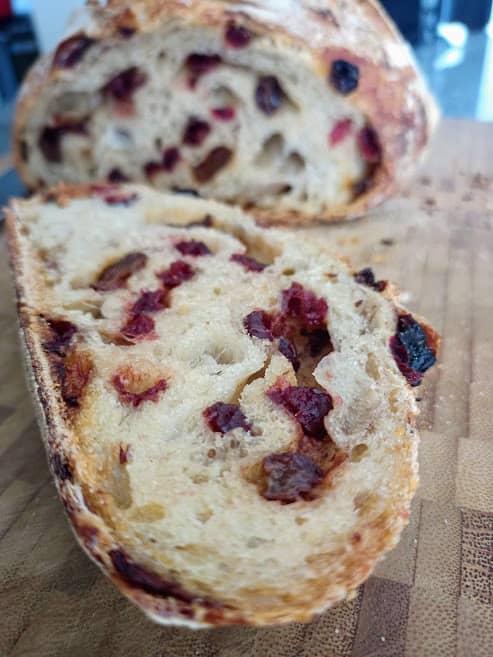How to Make Savory Sourdough Discard Crackers for Cheese Boards
Sourdough discard crackers turn your leftover starter into crunchy snacks that work great on cheese boards and appetizer plates. These crackers give home bakers a smart way to use their active sourdough starters and create something tasty at the same time. Each crispy bite packs the complex, tangy flavors that make sourdough special.
The recipe adapts easily to what you have in your kitchen. You can mix herbs, spices, and cheese to create your own unique combinations. This piece walks you through everything from basic ingredients to step-by-step instructions, flavor options, and the best ways to keep your homemade crackers fresh and crispy.
Ingredients and Equipment Needed
The right ingredients and equipment make delicious sourdough discard crackers. Each ingredient plays a significant role in creating the perfect texture and flavor.
Sourdough discard
Unfed sourdough starter forms the base of these crackers. You’ll need 200-227g (approximately 1 cup) of discard that adds a distinctive tangy flavor and creates a crisp texture. This discard contains wild yeast and beneficial bacteria that boost digestibility, even though it’s no longer active enough for bread baking.
Flour options
These crackers shine because you can mix and match different flours. A simple ratio has:
- All-purpose flour: 60-80g for structure
- Whole wheat flour: 50-60g for nutty flavor
- Rye flour: Optional 12g for earthiness
You can adjust these ratios as long as the total flour weight stays the same. All-purpose flour provides a neutral base, and whole wheat adds a hearty texture. Rye flour brings an earthy complexity that makes these crackers perfect for cheese boards.
Seasonings and flavorings
Start with 30g butter or olive oil and 5g salt as your base ingredients. The real magic happens when you add more seasonings. Herbs de Provence brings classic Mediterranean flavors to your dish. You can also use single dried herbs like rosemary, thyme, or basil to create distinct taste profiles. Cheese enthusiasts will love adding 30g of finely grated Parmesan or aged cheddar that adds rich, savory depth.
Tools required
You’ll need the right equipment to make these crackers successfully:
- Digital kitchen scale for precise measurements
- Large mixing bowl for combining ingredients
- Rolling pin or pasta machine for even thickness
- Baking sheets lined with parchment paper
- Pastry wheel or pizza cutter for scoring
- Fork for docking the dough
- Pastry brush for applying oil
A pasta machine is optional but it’s a great way to get consistently thin crackers. The machine will give a uniform thickness that leads to even baking and crisp texture. You can use a standard rolling pin with some patience and attention if you don’t have a pasta machine.
Step-by-Step Instructions
The process of turning sourdough discard into crispy crackers needs careful attention and proper technique. A structured approach will give consistent results every time.
Mixing the dough
The right temperature of ingredients plays a crucial role in this process. Bakers combine cold butter with flour and salt to start. This mixture creates a sandy texture that makes the crackers tender. Cold starter from the refrigerator works perfectly as sourdough discard. The food processor handles the mixing quickly, but hand mixing gives equally good results with proper technique.
Chilling and rolling out
The dough needs a 30-minute minimum chill time in the refrigerator. You can leave it there for up to two days. This significant resting period helps the flour absorb moisture and relaxes the gluten. The result is crackers with perfect texture. The dough becomes easier to handle if you split it into smaller portions before rolling. Professional results depend on consistent thickness – roll to 1/16-inch for crispy crackers or 1/8-inch for sturdier ones.
Cutting and seasoning
The rolled dough needs proper cutting into shapes through these techniques:
- A pizza wheel creates clean straight-edged squares or rectangles
- Fluted cutters add decorative edges to the shapes
- Light scoring helps separate dough pieces later
- Fork docking prevents the crackers from puffing too much
A light coating of oil brushed on top and your favorite seasonings will enhance the flavor. The cut crackers need a quick 5-10 minute chill that helps them keep their shape during baking.
Baking tips
The success of these crackers relies on proper temperature and timing control. You need 325°F (163°C) to bake them perfectly, and the total time depends on their thickness. Here’s everything you need to know to get perfect results:
- Look for light golden edges after 20 minutes
- Turn the baking sheet around halfway to brown evenly
- Make them extra crispy by lowering heat to 250°F and baking longer
- Let the crackers cool completely on the baking sheet to maximize crispness
Slightly chewy crackers can go back into a low-temperature oven (250°F) for 2-5 minutes to reach the right crispness. The crackers will continue to crisp as they cool, so let them cool patiently to achieve the perfect texture.
Roll the dough to an even thickness and watch them closely in the final minutes to get consistently crispy results. The edges should be slightly darker than the centers, suggesting they’re properly done. A well-baked batch breaks with a satisfying snap and shows a golden-brown color throughout.
Flavor Variations and Toppings
Sourdough discard crackers showcase their versatility in endless flavor possibilities as bakers experiment with different seasonings and toppings. These unique combinations make them perfect for cheese boards and appetizer spreads.
Herb and spice combinations
Flavorful crackers start with the right herb combinations. Bakers can create their signature blends using these popular combinations:
- Classic Mediterranean: Herbs de Provence with a touch of sea salt
- Rustic Italian: Dried thyme, rosemary, and sage (1 teaspoon each)
- Smoky BBQ: Smoked paprika, brown sugar, and garlic powder
- Ranch Style: Ranch seasoning with fresh parsley and dried basil
- Spicy Kick: Jalapeño powder with garlic and sea salt
The quickest way to get the best flavor is mixing herbs and spices directly into the dough instead of sprinkling them on top. This approach will give a consistent flavor in every bite.
Cheese additions
These crackers become rich, savory treats with cheese that complement wine and charcuterie perfectly. Each cheese variety brings its own unique flavor profile and texture:
| Cheese Type | Amount | Flavor Notes |
|---|---|---|
| Sharp Cheddar | 1/2 cup | Bold, classic taste |
| Parmesan | 1/4 cup | Salty, umami-rich |
| White Cheddar | 1/2 cup | Mild, buttery |
| Monterey Jack | 1/2 cup | Creamy, subtle |
The base recipe needs half the salt to balance the cheese’s saltiness. Make sure to grate the cheese finely and mix it into the dough before rolling to distribute it evenly.
Seed and nut options
Seeds and nuts bring delightful texture and visual appeal to sourdough discard crackers. The popular everything bagel seasoning has poppy seeds, sesame seeds, dried garlic, dried onion, and coarse salt that creates a professional finish rivaling artisanal crackers.
Sesame seeds make an excellent coating before baking to give crackers a Middle Eastern flair. A sophisticated blend combines 2 teaspoons each of fennel and sesame seeds with 1 teaspoon of poppy seeds and a delicate sprinkle of flaky sea salt.
The seeds or nuts need gentle pressing into the dough before baking to stick properly. Lightly toasted seeds can add depth to the flavor profile. Many bakers boost the seed flavors by applying a light olive oil coating before adding their toppings.
These artisanal-style crackers shine as gifts or party offerings. You can create variety packs with different seed and nut combinations that make stunning additions to holiday gift baskets and party platters, especially alongside complementary cheeses and spreads.
Serving and Storage Tips
Becoming skilled at serving and storing sourdough discard crackers raises them from simple snacks to sophisticated accompaniments for any gathering. These versatile crackers shine brightest with proper presentation and preservation.
Pairing with cheese boards
These crackers shine when paired with a thoughtfully assembled cheese board. The perfect combination comes from balancing flavors that complement the crackers’ tangy notes. Here’s an arrangement that works beautifully:
| Cheese Type | Accompaniment | Additional Element |
|---|---|---|
| Hard Aged | Fresh Figs | Honey Drizzle |
| Soft Brie | Fresh Herbs | Fig Jam |
| Blue Cheese | Dried Fruits | Candied Nuts |
| Stinking Bishop | Pickled Pear | Fresh Grapes |
A great cheese board has 3-5 cheese varieties and at least one cured meat option. Prosciutto, pancetta, mortadella, and salami make excellent Italian-inspired companions that boost the crackers’ sourdough profile.
Dips and spreads
Crackers make excellent companions to countless dips and spreads. Their robust texture stands up beautifully against both cold and warm toppings:
Savory Options:
- Smoky chipotle cheese dip
- Spicy grain mustard
- Classic hummus
- Kefir ranch dressing
- Garlic-herb goat cheese
Sweet Complements:
- Fig jam
- Honey with fresh herbs
- Dark chocolate (adds unexpected depth)
Proper storage methods
Your crackers will stay crispy with the right storage approach. The best storage option is an airtight container. Several containers work well:
- Glass jars with tight-fitting lids
- Mason jars with sealed tops
- Vacuum-sealed bags for extended freshness
- Asian soup containers with secure seals
Crackers stored at room temperature stay fresh 5-7 days. A quick 2-3 minute refresh in a 250°F oven can restore the crunch of stale crackers.
Make-ahead options
Advance planning boosts convenience and quality. You can prepare these crackers ahead of time using several methods:
Short-term preparation:
- The dough stays fresh up to 12 hours in the refrigerator
- Rolled, uncut dough needs storage between parchment sheets
- Seasoning and cutting work best right before baking
- Let crackers cool completely before storing
- Baked crackers last up to 2 months in the freezer
- Cool your crackers completely before freezing
- Air-tight, freezer-safe bags work best for storage
- Room temperature thawing takes 30 minutes before serving
Professional bakers suggest these tips to get the best results:
- Mark your containers with baking dates
- Each flavor needs separate storage to keep tastes pure
- Rotate seasonal varieties regularly
- Peak entertaining seasons call for double batches
The crackers’ sourdough base creates natural preservation properties that make them perfect for advance preparation. Your event planning should account for 6-8 crackers per guest at appetizer portions. Main cheese board presentations need 10-12 crackers per person.
Variety packs make thoughtful gifts with different flavors stored individually. Adding serving suggestions and pairing recommendations creates an extra special touch. Holiday gift baskets and party favors become more special with these crackers, especially paired with artisanal cheeses or spreads.
Conclusion
Sourdough discard crackers blend environmentally responsible baking with amazing taste. These crackers turn unused starter into delicious treats that complement cheese boards and appetizer spreads perfectly. Their versatility shows in the countless flavor combinations. The right techniques and storage methods help create consistently excellent results at home. Any baker can make these crackers that rival store-bought versions and add elegance to gatherings or gift baskets.
Quality ingredients and proper technique are the foundations of great sourdough baking. Bakers who want to move beyond crackers should try The Yeast We Can Do’s authentic artisanal sourdough starter. This premium starter helps create exceptional bread and pizza with the perfect tangy flavor and signature crust – just email john@theyeastwecando.com to get yours. These crackers highlight sourdough’s adaptability and offer a smart solution to use discard. They prove that practical sustainability and great taste naturally go hand in hand.
FAQs
What are some ways to utilize sourdough discard?
Sourdough discard can be creatively used in various recipes to enhance flavor and texture. Some popular options include making sourdough pancakes, waffles, banana bread, apple cake, pumpkin bread, blueberry muffins, scones, and cornbread.
How can I reactivate sourdough discard?
To reactivate sourdough discard, take a small amount from your jar and feed it as you would a regular sourdough starter. Repeat this feeding process over a few days until the starter begins to rise and fall consistently. This reactivated starter can then be used for baking.
Is it possible to create a new sourdough starter from discard?
Yes, sourdough discard can be used to initiate a new sourdough starter. Simply gift the discard to someone interested in starting their own sourdough baking, or use it yourself. The recipient needs to feed the discard with water and flour regularly to develop a healthy and active starter.
When is it appropriate to use sourdough discard in recipes?
Sourdough discard should not be used in recipes during the first 7 days of creating a sourdough starter. After this initial period, the discard can be incorporated into various recipes, including those that require no waiting, utilize overnight methods, or use a significant amount of discard.






